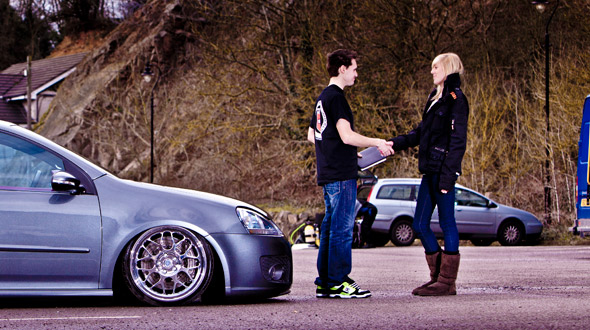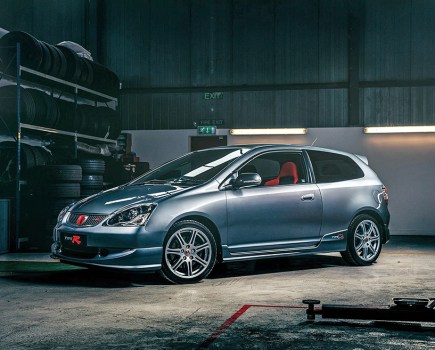Buying a used car can be a bargain if you know what you’re looking out for, and a nightmare if you don’t. Here are some tip and tricks everyone can follow to make sure they get the best from their new used car.
1. Do some investigating
If someone is selling the model of a car you want to own, do some internet research before you even go to look at the vehicle. Online price guides and comparisons between similar cars on the market will help you decide if you’re being charged the correct price
Similarly, find out about road tax costs, insurance, how much the fuel will cost, and whether there are any common faults to look out for within this type of car. You’ll know before you get there if you can actually afford it, and what to look out for in terms of faults.
2. Visit in the right conditions
Rain can cover numerous scratches and bumps a car may have been subjected to, so if you visit in wet weather, you won’t see the car in its true condition. Likewise, dull light can mask a range of possible horrors, so ensure you’re checking the car out in bright, natural sunlight in order to get the full picture.
3. Check the…
a. Mileage
i. Is the mileage consistent with the look of the car? Check out the wear on the steering wheel, pedals and gear knob as they are often a good indicator. Check the mileage against previous MOTs for older cars and against the service history if the car is reasonably new.
b. Documents
i. There are three things to check here: V5, tax and MOT if the car is over three years old. Ensure the registration and chassis number match the work on the documentation, as well as the name and address against the person selling the car.
c. Service history
i. This is particularly important on speciality cars, such as 4x4s, though it should always be checked on every car. The time, date and name of the dealership should all be present on service history records; and while older cars may not have the full history, always check to see if the seller has any receipts for work done.
4. Check all components are present and correct
The handbook should always be within the car, and if it is not, ask for it. They are very expensive to replace, which could easily raise the cost of your car without you even realising.
Similarly, most cars come with two sets of keys; if there is only one, ask why. Modern car keys can cost more than £100 to replace, so if you require more than one set this could be a big cost. Master keys are even more expensive, so ensure every individual piece is accounted for.
5. Take a test drive
Take some proof with you to show you are covered on the car, and take a 15-20 mile test drive. This will be your main chance to see how the car feels when it’s driving, how it reverses, how it sounds, and so on. Try driving down a mixture of slow and fast roads, and try maneuvering in a range of directions at different speeds.
Do you feel physically comfortable driving the car? Does it fulfil your personal needs? Even if a car is in perfect condition, if you don’t feel comfortable driving it you’re never going to make the most out of the vehicle.
6. Look out for…
a. Clocking
i. This is an illegal practice which involves winding back the mileage of a car to increase the value – every 1000 miles removed significantly raises the price
b. Car Cloning
i. This is where the identity is changed through the replacement of one registration plate with another from another similar vehicle.
c. Cut-and-shut
i. This is when the remaining parts of two or more cars are welded together after they have been ‘written off’, and then the ‘new’ car is given the identity of one of the cars that is included in the ‘mash up’.
7. Look at the smaller details
Panels and doors that are not fully aligned and differing colours across the body of the car would suggest that the vehicle has been involved with some kind of accident, and been repaired since. Likewise, evidence of spray paint around handles and windows would suggest something similar.
If the engine looks pristinely clean, the likelihood is it’s been sprayed down with a power washer. Why? This could be covering any leaks in the engine, and the seller is trying to cover this up. Check under the bonnet once you have been for a test drive as this should show up any of these problems.
This particular point can be expanded into a lot more details, for example British car website VCARS offers a great 25 point checklist to look through to ensure that the seller isn’t hiding anything from you.
8. Always get an HPI check
Getting an HPI check will ensure there are no nasty surprises financially. This check can reassure you that there is no outstanding finance, that it hasn’t been stolen, hasn’t been written off, and hasn’t been clocked.
These are some of the biggest problems with used cars, so while getting the check will cost you, you may be saving yourself thousands in the long run, making it one of the most important parts of buying a used car.
9. Don’t fall for the sob story
If you decide the car isn’t for you, the seller may do whatever they can to try and persuade you otherwise. Even during your inspection the seller may talk about a new baby being on the way, a loss in the family, or a job loss.
While this may all be true, you should not feel that you have to buy a car that is not right for you. Buying a car, used or otherwise, is a big commitment financially and you should not feel pressured into buying anything you are not 100% happy with.
10. Be the buyer you’d like to sell to
It’s easy to slip into a confrontational frame of mind when investigating the car. With some much to consider, you may be tempted to go into the inspection with a negative frame of mind.
Buying a car should be a happy experience so treat it as such. If you decide to buy the car, do so swiftly and offer to take the car as soon as is possible. If you decide to leave the car, do so with politely and with consideration to the time the seller has given you.

















